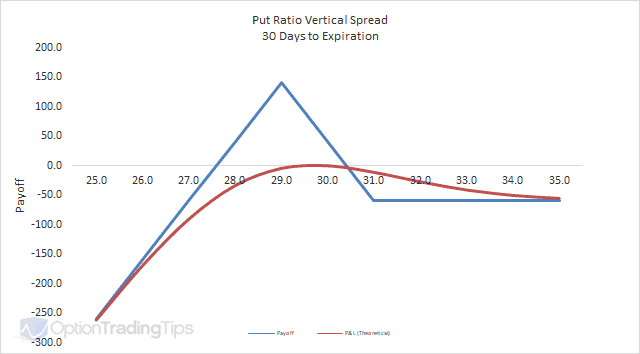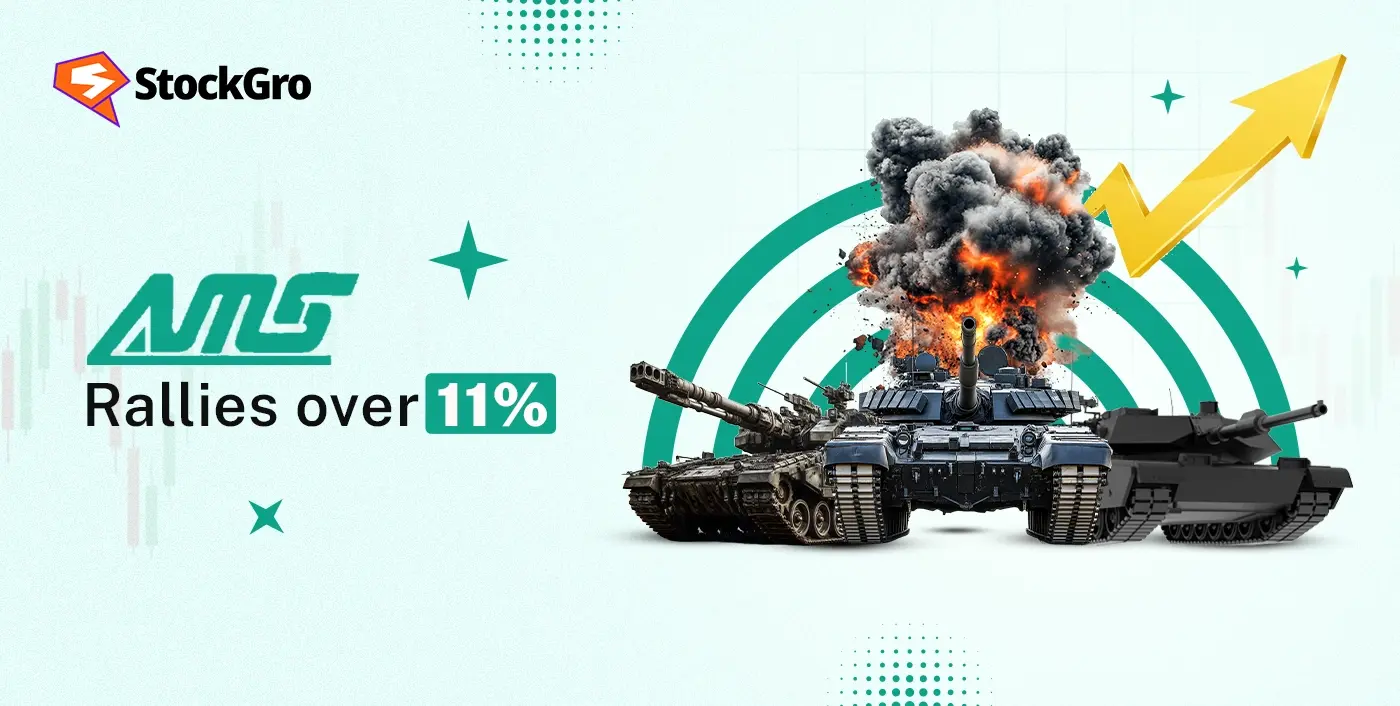
Ever watched the market fall and thought, “It’s dropping, but probably won’t crash hard?” What if there was a strategy that let you profit from a mild dip or sideways action, without making you pay heavy option premiums?
That’s exactly what the put ratio spread is all about. For traders jumping into F&O, this is a trick you will definitely want in your options toolkit. Let’s unpack how it works, when you should use it, and all the risks and rewards.
What Is a Put Ratio Spread?
A put ratio spread is an options strategy where you buy one put option and sell more than one put option at a different strike price, but with same expiry.
Think of it like this:
- You buy one put (usually at a higher strike).
- You sell two puts (usually at a lower strike).
The ratio most commonly used is 1:2, but traders can also try 2:3 or 3:5, depending on risk appetite. The goal is to benefit from time decay and a market that doesn’t move too much in either direction.
How the Put Ratio Spread Works (Mechanics)
Here’s the flow of the strategy:
- Choose a stock or index in option trading you expect to fall a little or stay sideways.
- Buy one put option at a higher strike (for protection).
- Sell two put options at a lower strike (to collect premium).
The premium received from selling two puts is often higher than the cost of buying one put. This makes the strategy either low-cost or even a net credit trade.
In short: you are taking limited profit potential if the stock falls slightly, but exposing yourself to unlimited downside risk if the stock crashes heavily.
Put Ratio Front Spread vs Back Spread
Here’s a quick side-by-side view so it’s easy to compare:
| Feature | Put Ratio Front Spread | Put Ratio Back Spread |
| Position Setup | Sell more puts than you buy | Buy more puts than you sell |
| Market View | Expect market to stay flat or dip slightly | Expect market to fall sharply |
| Cost | Usually low cost or even a net credit | Often a debit trade (you pay premium) |
| Profit Potential | Limited profit at the sold strike | Unlimited profit if market falls hard |
| Risk | Unlimited downside risk | Limited risk (loss capped) |
| Best Use Case | Range-bound or mildly bearish markets | Strong bearish view with high volatility |
Example Setup & Payoff Diagram
For example, let’s assume a stock is trading around ₹30.00. That’s our starting point for the setup.
Let’s build a put ratio spread with those numbers:
- Buy 1 Put at strike ₹30.0, premium = ₹1.04
- Sell 2 Puts at strike ₹29.0, premium = ₹0.62 each
Premium details:
- Paid = ₹1.04
- Received = ₹0.62 × 2 = ₹1.24
- Net credit = ₹0.20
Outcomes:
- If the stock stays above ₹30.0, all options expire worthless, and you keep the credit of ₹0.20.
- If the stock drops to ₹29.0, that’s your maximum profit point.
- If the stock falls sharply below ₹28.0, losses begin to spiral with unlimited downside risk.
Here’s the payoff diagram for this example:

Breakeven Points & Profit/Loss Zones
In a 1:2 put ratio spread, there are two breakeven points:
- Upper breakeven = higher strike (bought put) + net credit received.
- Lower breakeven = lower strike (sold put) – (difference between strikes – net credit).
In our example:
- Upper breakeven = ₹30.00 + ₹0.20 = ₹30.20
- Lower breakeven = ₹29.00 − (₹1.00 − ₹0.20) = ₹28.20
So:
- Above ₹30.20 → you make the net credit (~₹20).
- Between ₹29.00 and ₹30.20 → limited profit zone.
- At ₹29.00 → maximum profit.
- Below ₹28.20 → unlimited losses.
Advantages of Using Put Ratio Spread
The put ratio spread appeals to traders because it doesn’t always need heavy investment. Here’s why many like it:
- Low or no cost entry: You often enter the trade with very little cash. Sometimes you even get a net credit, which feels reassuring at the start.
- Profitable in sideways phases: Works well when Nifty or Bank Nifty don’t show big moves. Many expiry weeks in India look like this.
- Time decay advantage: Since you’re shorting more options than you’re buying, time works for you. Every passing day without a big fall adds to your side.
- Flexibility to adjust: Traders can shift strikes, add hedges, or close early. You’re not locked into one path.
Risks & Drawbacks (Unlimited Downside)
Of course, nothing in options comes without strings attached. The put ratio spread has some heavy risks too:
- Unlimited risk: If the market crashes badly, losses can be massive. This is the biggest problem.
- Margin pressure: Selling multiple puts locks in capital. Since you are shorting multiple puts, brokers may ask for a high margin.
- Difficult for beginners: You need to track the market actively. If you miss a move, the trade can go wrong fast.
- Requires timing: Works only when you correctly judge that the downside will be limited. Wrong timing can be costly.
Adjustments & Rolling Strategies
Even the best plans can go wrong. If the market moves in a way you didn’t expect, you don’t have to sit and watch losses pile up. Traders usually tweak or “adjust” their position. Here are some common ways:
- Convert into a Bear Put Spread: The simplest fix is to buy back one of the sold puts. That leaves you with one long put and one short put. The unlimited loss is capped, and the trade becomes safer, though the potential reward also comes down.
- Roll down the strikes: Suppose you sold puts at 24,600 and the market starts sliding towards that level. You can close those and sell fresh puts at a lower strike, say 24,400. This collects extra premium and gives the trade more breathing space.
- Close the trade early: Sometimes the smartest move is to exit before things get ugly. If charts or news suggest a sharper fall ahead, it’s better to take a small hit or small gain and move on, rather than holding on and hoping.
- Add a hedge with futures: Experienced traders often short futures along with the ratio spread. This way, if the index drops a lot, the futures profit can cover part of the losses from the short puts.
The main idea is to stay alert. A ratio spread can look comfortable at entry, but quick adjustments are what separate safe traders from risky gamblers.
Put Ratio Spread vs Bear Put Spread
| Feature | Put Ratio Spread | Bear Put Spread |
| Structure | Buy 1 put, Sell 2 puts (same expiry, different strikes) | Buy 1 put, Sell 1 put (same expiry, different strikes) |
| Cost of Setup | Usually low or even a net credit | Always a net debit (premium paid) |
| Risk | Unlimited downside risk if market crashes | Limited risk (loss capped at net premium paid) |
| Reward | Limited profit if market dips slightly; maximum profit at sold strike | Limited profit if market falls; maximum profit = difference between strikes – premium paid |
| Margin Requirement | High, since multiple short puts are involved | Lower, since only one short put |
| Best Market View | Slightly bearish to range-bound | Moderately bearish |
| Complexity | Advanced, needs monitoring | Simple, easier for beginners |
Best Market Conditions & Timing
Put ratio spreads are not “set and forget.” Pick the right market conditions:
- Range-Bound or Mild Downtrend: If the market is choppy or holding a support zone, your odds of max profit rise.
- Just After a Sharp Fall: If Nifty/stock has fallen and seems ready to stabilise, time decay works for you.
- Events Behind You: Deploy post-budget, earnings, or RBI events, not before. It reduces the risk of wild swings.
- Moderate Implied Volatility (IV): Spreads are juicier with higher IV, but not at extremes. Too high? Extra caution.
Don’t use this if you expect a big breakdown!
Conclusion
The put ratio spread is a smart but risky options strategy. It allows traders to set up a position at a very low cost and even earn upfront credit. If the market stays within a predictable range, the rewards are attractive.
But the unlimited downside makes it unsuitable for beginners or those who cannot monitor trades closely. If you are still learning, you can try this on virtual trading platforms first. Once you are confident, you can think about applying it in real trades with proper risk management.
Like all strategies, the key is knowing when to use it and having an exit plan ready.
FAQs
A put ratio spread is an options strategy where you buy one put and sell more puts at a lower strike. It usually costs little and works best when the market stays sideways or dips slightly.
You can adjust by buying back one of the short puts, rolling the strikes down, or closing early if the market falls. Some traders also hedge with futures, which helps reduce losses if the market crashes.
In a front spread, you sell more puts than you buy, earning credit but taking unlimited risk. In a back spread, you buy more puts than you sell, paying a debit but gaining profit if markets crash.
This strategy works best when markets are calm or slightly bearish. Traders often use it during expiry week, when time decay is fast, and after big events, once volatility cools down and prices move in narrow ranges.
The biggest advantage is its low cost. Sometimes you even get a net credit at entry. It also benefits from time decay, suits range-bound conditions, and offers flexibility since positions can be adjusted if the market moves.

